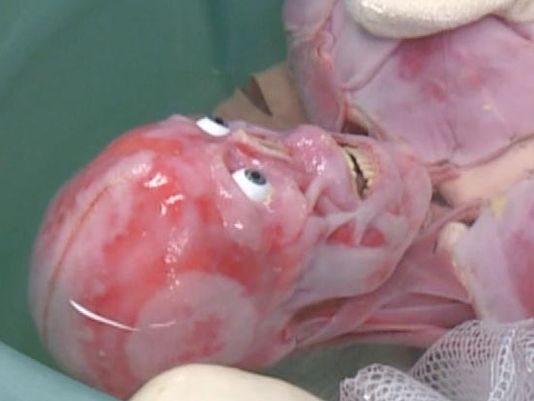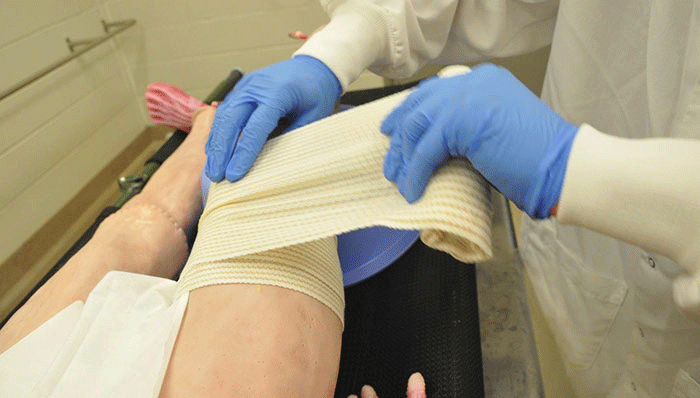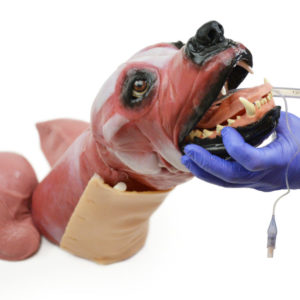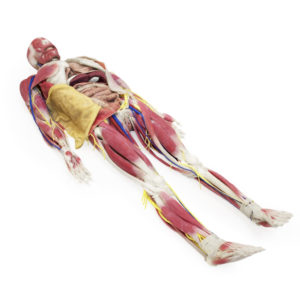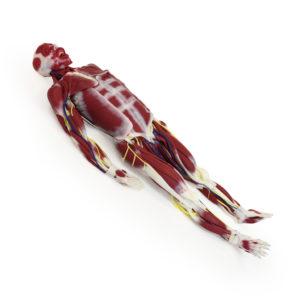SYNDAVER NEWS
With Synthetic Cadavers, Students Learn Real-Life Skills
In the operating room, precision comes with practice. As technology continues to advance, surgical training exercises look very much like real surgeries.
“This is a complete game changer,” says Dr. Luis Llerena, a surgeon who oversees USF’s state of the art Center for Advanced Medical Learning and Simulation, located in downtown Tampa. “It’s no longer for any practitioner to learn on the job.”
Our 10th Patent
SynDaver Labs’ tenth U.S. Patent (No 8,801,438) was issued today. This patent covers anatomic models that comprise components that simulate human or non-human animal components. The models may be used for development, experimentation, or training in the field of orthopedic surgical devices, and/or implant devices. The models may also be used for training of students in the medical field for procedures performed in practice, such as for example drawing blood from a patient, or placing a central line in a carotid artery of a patient. In exemplary embodiments, the models comprise structures such as cartilage, tendons, ligaments, organs, luminal structures, and muscles that are made of hydrogel materials.
Dion Lim Talks to SynDaver on CBS News
A Death-Like Model
Arkansas State University Mountain Home’s funeral science program debuted its new teaching tool this week — a synthetic cadaver — and saying it is “life-like” is not exactly accurate. “Death-like” would be a more apt description.
SynDaver Synthetic Human Supporting Wound Research

Scientists at Naval Medical Research Unit San Antonio (NAMRU-SA) are among the first to use the SynDaver Synthetic Human (SSH), an anatomically accurate synthetic human replica, to support test and evaluation efforts that aim to characterize the performance and effectiveness of various treatment modalities used in combat casualty care.
Archives of Plastic Surgery: A Cost Analysis
Development of a Five-Day Basic Microsurgery Simulation Training Course: A Cost Analysis
The widespread use of microsurgery in numerous surgical fields has increased the need for basic microsurgical training outside of the operating room. The traditional start of microsurgical training has been in undertaking a 5-day basic microsurgery course. In an era characterised by financial constraints in academic and healthcare institutions as well as increasing emphasis on patient safety, there has been a shift in microsurgery training to simulation environments. This paper reviews the stepwise framework of microsurgical skill acquisition providing a cost analysis of basic microsurgery courses in order to aid planning and dissemination of microsurgical training worldwide.
SynDaver Labs on Crossbones
The SynDaver Synthetic Human made the first of many to come, appearances on NBC’s Crossbones Friday, May 31.
Synthetic Human Arrives in Chesterfield
When it comes to preparing students for careers in medical-related fields, mannequins are so yesterday.
Salt + Water + Fibers = Synthetic Human Body
Models used for testing medical devices range from the gold standard – a live human – to inadequate models that design engineers assemble themselves. Some even resort to using twisted up pieces of rubber tubing to simulate vessels for design validation testing. Obviously, this approach misguided, not just for medical devices but for any product requiring testing. Engineers relying on data from a poorly conceived test environment may move a design in the wrong direction, leading to increased development costs or a product never reaching its final stage.


